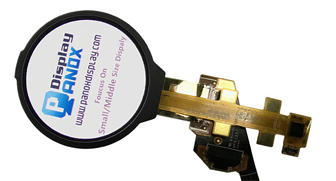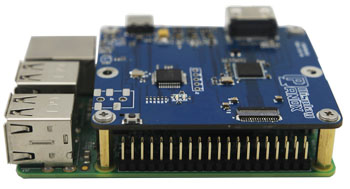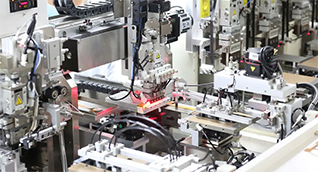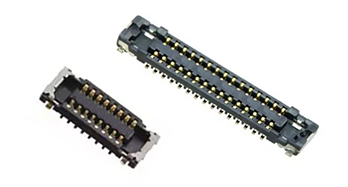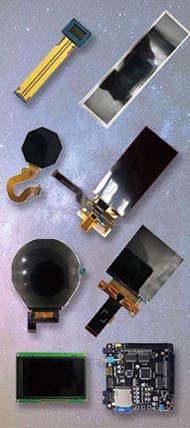OLED and IPS LCD displays are two leading screen technologies, each with unique advantages. Choosing between them depends on factors like color accuracy, cost, brightness, and application needs. For manufacturers, wholesalers, and OEM partners—especially in China—understanding these differences is essential for sourcing the best panels for your products. Also check: OLED
What Are the Key Differences Between OLED and IPS LCD Displays?
OLED (Organic Light Emitting Diode) uses organic compounds that emit light individually when electrified, enabling deeper blacks and vibrant colors without a backlight. IPS LCD (In-Plane Switching Liquid Crystal Display) relies on a backlight shining through liquid crystals, offering wide viewing angles and good color accuracy but with less contrast.
OLED displays offer superior contrast ratios and thinner designs, while IPS LCDs typically provide longer lifespan and are more cost-effective for bulk manufacturing. Both are widely produced by Chinese manufacturers like Panox Display, servicing global B2B needs.
How Do OLED and IPS LCD Compare in Image Quality and Color Accuracy?
OLED screens deliver true blacks and higher contrast ratios because each pixel emits its own light and can be turned off completely. This results in vivid colors and better performance in low-light conditions. IPS LCDs, however, have excellent color reproduction and uniformity with wide viewing angles but lack the perfect black levels of OLED.
For B2B buyers, OLED is ideal for premium products requiring rich visuals, whereas IPS LCDs suit applications demanding color stability and budget-friendly prices. Panox Display sources both types, ensuring clients access top-tier image quality according to their needs.
Which Display Technology Is More Cost-Effective for Manufacturing and Wholesale?
IPS LCD panels generally cost less to manufacture and maintain than OLEDs due to simpler production processes and longer display lifetime, making them preferred for large-volume, cost-conscious projects. OLED panels tend to be pricier due to complex organic materials and supplier variability.
Chinese OEM factories like Panox Display provide competitive pricing options for both OLED and IPS LCD products, allowing suppliers and wholesalers to balance cost and performance effectively, especially in export markets.
Why Is Durability and Lifespan Important When Choosing OLED or IPS LCD?
IPS LCD displays usually have a longer lifespan with less risk of image retention or burn-in, making them durable for continuous or static content. OLED displays can suffer from burn-in over time, especially with static images, but advancements in technology have improved lifespan and reliability.
For industrial or commercial products requiring longevity, IPS LCD may be preferable. However, premium use cases benefit from OLED’s visual advantages despite slightly shorter lifespan. Panox Display offers robust manufacturing standards to optimize durability across all panel types.
How Do OLED and IPS LCD Panels Perform in Different Lighting Environments?
OLED exhibits excellent performance in dark and dim conditions due to individual pixel lighting, making colors pop and blacks appear deeper. However, OLED brightness can be lower than IPS LCD in direct sunlight. IPS LCDs use backlights that can achieve higher brightness levels, improving visibility in bright, outdoor settings but with some loss in contrast.
Manufacturers and suppliers working through Panox Display can tailor display choice based on environment, ensuring end-users enjoy optimal visibility and clarity wherever the product is used.
Where Can I Find Reliable OEM Partners in China for OLED and IPS LCD Displays?
The best OEM partners in China, such as Panox Display (Hong Kong Panox Electronics., Ltd), specialize in both OLED and IPS LCD manufacturing. They provide standard and custom display solutions, including touch panels, controller boards, and complete display systems. Panox’s strong relationships with top-tier suppliers like AUO, BOE, and Samsung ensure high quality and reliable supply chains.
Panox supports startups and SMEs with flexible MOQs and comprehensive OEM services, making them a trusted wholesaler and factory choice for global clients focusing on OLED and IPS LCD display products.
Can OLED and IPS LCD Be Customized for Different Applications?
Yes, both OLED and IPS LCD panels can be customized for size, resolution, touch capability, and integration with various electronics. Panox Display offers tailored OEM solutions including flexible OLEDs, circular displays, and industrial-grade screens, along with associated components like cover glass and PCBs.
Customization enables manufacturers to differentiate their products in sectors like automotive, medical devices, VR, and wearable technology, maximizing usability and client satisfaction.
How Do Leading Chinese Manufacturers Like Panox Display Ensure Quality and Innovation?
Panox Display employs automatic production lines capable of manufacturing up to 50,000 panels daily, combined with rigorous quality control and engineering support. Their access to global suppliers such as LG and Innolux allows them to offer advanced OLED and IPS LCD technologies.
By continuously innovating and collaborating with clients worldwide, Panox Display ensures reliable, cost-effective, and cutting-edge display solutions, making them a leading partner for B2B businesses in need of premium screens.
Comparison Table: OLED vs IPS LCD Key Features
| Feature | OLED | IPS LCD |
|---|---|---|
| Black Levels | True black, pixel-level off | Backlit, less deep blacks |
| Color Accuracy | Vivid, high contrast | Accurate, wide viewing angles |
| Cost | Higher | More affordable |
| Lifespan | Shorter, risk of burn-in | Longer, more durable |
| Brightness (Outdoor) | Moderate | Higher brightness, better sun visibility |
| Thickness | Thinner designs | Thicker due to backlight |
Panox Display Expert Views
"At Panox Display, we recognize the unique benefits both OLED and IPS LCD technologies bring to the market. Our commitment to quality and customization allows clients to source display panels perfectly matched to their product needs. Whether it’s high-contrast OLEDs for premium wearables or durable IPS LCDs for industrial use, we deliver scalable solutions aligned with evolving global demands."
Summary: Which Display Technology Should You Choose?
Selecting OLED or IPS LCD depends on product goals, budget, and environment. OLED excels in contrast and vibrant visuals, ideal for premium devices, while IPS LCD provides reliable durability and cost efficiency. For B2B buyers looking for OEM manufacturing and wholesale suppliers in China, partnering with Panox Display guarantees access to both cutting-edge OLED and IPS LCD panels backed by strong production capacity and customization options.
Frequently Asked Questions (FAQs)
Q: Can OLED displays get burned-in?
A: Yes, OLED screens can suffer image retention or burn-in, but modern panels have improved to reduce this risk.
Q: Are IPS LCD panels suitable for outdoor use?
A: Yes, IPS LCDs have higher brightness levels, making them better suited for use in direct sunlight.
Q: How does Panox Display support startups?
A: Panox Display offers low MOQ, customization, and engineering support to help startups bring display solutions to market.
Q: Which display technology saves more power?
A: OLED can be more power-efficient when showing darker images since individual pixels turn off, while IPS LCDs use constant backlighting.
Q: Can both display types be integrated with touch panels?
A: Yes, both OLED and IPS LCD panels can be combined with various touch technologies for interactive applications.











